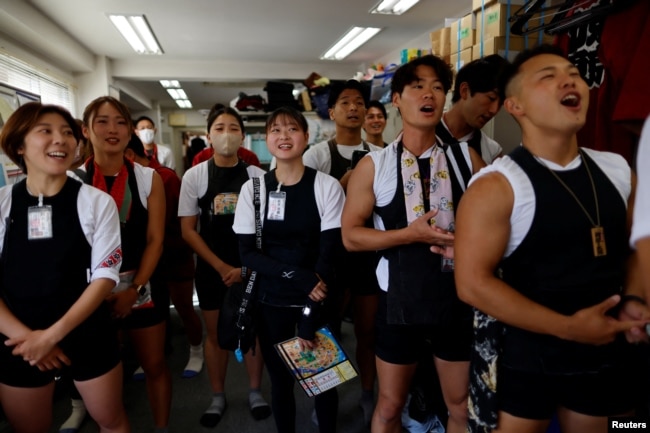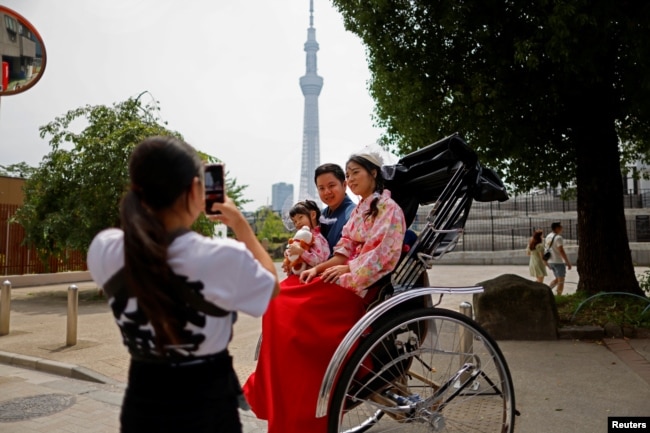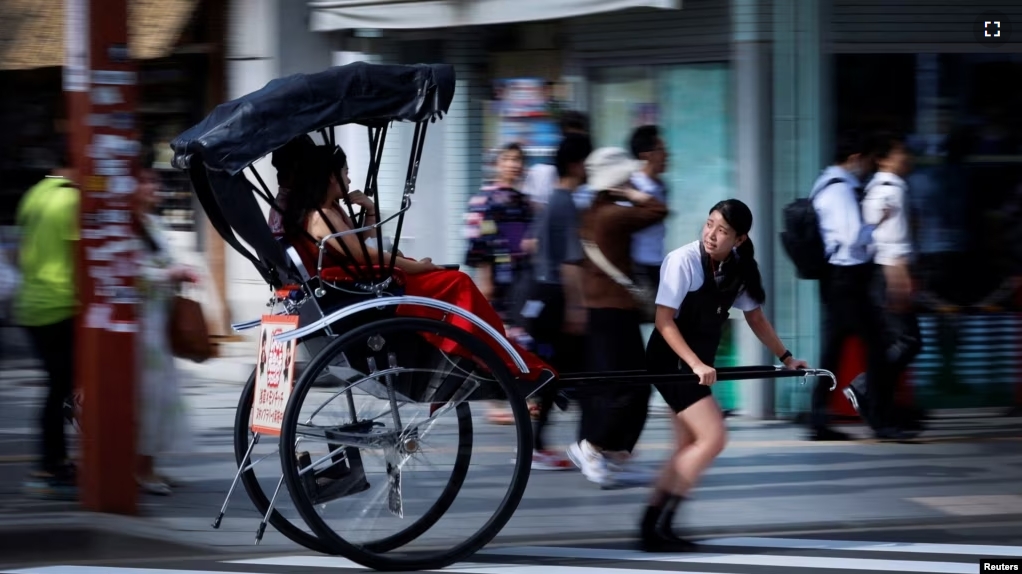Rickshaw comes from a Japanese word that means “human-powered vehicle.” The vehicle was first used in 19th-century Japan and then in other Asian countries to transport passengers.
Rickshaw pullers are traditionally male. Through social media, some Japanese women are drawn to the profession. And now, they have developed a strong local and international following.
Yuka Akimoto is one of the women who have chosen to pull rickshaws in Tokyo.
“I don’t deny it was extremely hard at the beginning,” Akimoto said, as the rickshaw can weigh up to 250 kg. “I’m not athletic and the cart felt so heavy.”
Now, she says she loves her job and wants to work as long as she is physically able. She wears a small sign that reads: “I don’t want to give up.”
Akimoto joined Tokyo Rickshaw two years ago. The company mainly operates in the Asakusa area, where many people visit. The company says about a third of their 90 pullers are now women. They are seeking more females to work for the company.
“The first girl who joined was cool,” said Tokyo Rickshaw President Ryuta Nishio. “Since we posted videos of her on social media, many girls have followed… and joined us.”
Nishio said he wants to create a place where women feel at ease and can be involved.
Rickshaw pullers wear special, traditional clothing on their feet. The pullers walk or run an average of 20km a day, no matter the weather.
In addition to being physically strong, rickshaw pullers must know a lot about Tokyo. They also need to communicate with visitors who want to see the city.

The most popular pullers earn over 1 million yen (about $6,700) a month. That is three times the national average. Tokyo Rickshaw noted that less than 10 percent of all applicants are offered a job.
The pullers actively use social media to increase their popularity. They want people to request them personally and repeat rides.
It was those social media posts that influenced college student Yumeka Sakurai to join Tokyo Rickshaw.
“I’ve watched many videos of women training hard and becoming rickshaw drivers themselves. They gave me confidence that I could do it too if I tried hard,” the 20-year-old said.
Sakurai’s friends and family disapproved of her choice. But after four months of training, she says she feels pleasure pulling passengers in her rickshaw.

Shiori Yano is 29 years old. She has been pulling rickshaws for nine years. She balances the demands of the job and her family.
She took a four-year break after having a child. She now works the rickshaw for eight hours a day, hurrying to pick up her daughter from childcare before going home to cook dinner and do housework.
“This job looked flashy from the outside but I’ve had some hard times, including when I was rejected in favor of a male driver,” Yano said. Still, she says she will continue to work because she enjoys it.
Tokyo Rickshaw’s Nishio said sometimes people are not satisfied women are doing such physically demanding work. Female pullers also sometimes face unwanted sexual behaviors or have their knowledge questioned by male riders, he added.
“We treat both male and female pullers completely equally,” Nishio said. “The women say they want to be treated the same as the men, and in fact many of them are way tougher.”
I’m Gena Bennett.
Mariko Katsumura reported this story for Reuters. Gena Bennett adapted it for VOA Learning English.
_________________________________________________
Words in This Story
cart–n. a vehicle designed for transport that has two wheels and is pulled by a person or animal
athletic–adj. physically strong, fit and active
cool–adj. pleasing, desired
confidence–n. belief in oneself
flashy–adv. desirable, fun
tough–adj. strong
